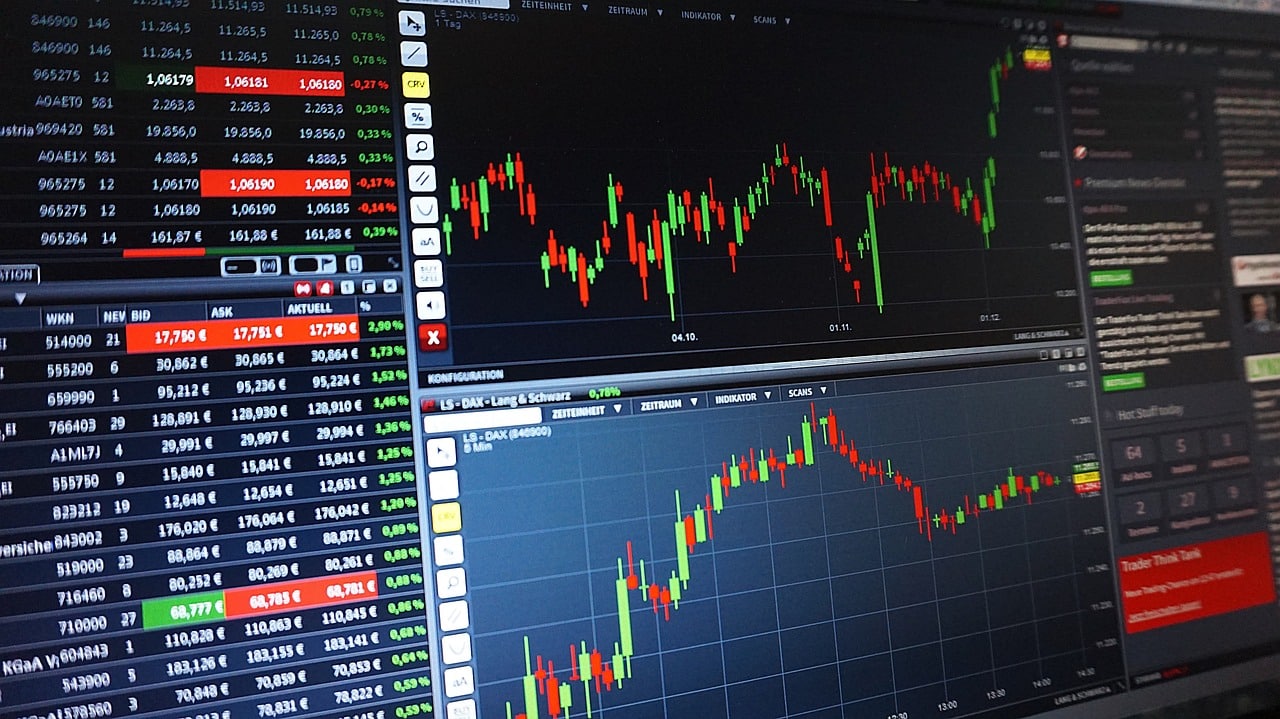Interest rates and stock markets move opposite one another. If rates rise, share prices will fall. Especially unemployed are the bonds, which become a more attractive place to put money as interest rates inch upward. Once interest rates go up, it may result in raising the cost of borrowed money for companies, and this means that they will have less money to invest back in the company, which then affects a smooth cash flow, an important condition for shares.
In this article, we will help you understand the interest-rate relationship with the stock market to be able to appreciate how interest rates affect trading.
Interest Rates: An Overview
Even though the change in interest rates takes at least 12 months for its effects to be felt on the overall economy, the response between markets and interest rates is mostly instant. Markets will try to price in future expectations of rate hikes and anticipate the actions of the Federal Open Market Committee.
Alongside the federal funds rate, the Federal Reserve sets a discount rate. The discount rate is the interest rate charged to the bank by the Fed. This rate is higher than the decided federal funds rate—in part to encourage banks to borrow from other banks at the reduced federal funds rate.
The Federal Funds Rate
The interest rate that affects the stock market is known as the federal funds rate. The rate for federal funds is the interest users apply when making overnight loans, though the discount rate applies to the interest rate when making, typically overnight, collateralized loans to depository institutions by the Fed.
The Federal Reserve controls inflation through the federal funds rate. By increasing the federal funds rate, the Federal Reserve is essentially attempting to lower the quantity of money in the money supply. This subsequently increases the price of money. In the event that the Federal Reserve intentionally decreases the federal funds rate, the supply of money will increase. Therefore, this thrives the encouragement to spend.
The central banks of other countries generally follow the same pattern. The federal funds rate is important because the prime interest rate—the interest rate commercial banks charge their most credit-worthy customers—is largely built off of it. It also provides the foundation for mortgage loan rates, credit card annual percentage rates, and a host of other consumer and business loan rates.
What Happens When Interest Rates Rise?
When the Federal Reserve boosts the discount rate, it directly boosts short-term borrowing costs for financial institutions. This circumstance is already a sufficient source of downward pressure on almost all other short-term interest rates for company and consumer borrowing in an economy. Because it costs financial institutions more money to borrow money, these same financial institutions often raise the rates they charge their customers to borrow money.
So, individual consumers are affected by increases in their credit card and mortgage interest rates, especially if these loans carry a variable interest rate. When the interest rate for credit cards and mortgages increases, the sum of money that consumers can borrow decreases.
Humans still have to pay their bills. When those bills get more expensive, they leave less money in households. When consumers have less discretionary spending money, business revenues and profits fall. When rates are rising, businesses confront higher borrowing costs and the negative effect of flagging consumer demand. Now, the relation between interest rates and trading is that both of those inputs can be a drag on earnings and stock prices.
What Happens When Interest Rates Fall?
When the economy starts to exhibit weakness, the Federal Reserve cuts the federal funds rate in compliance with higher growth. Unlike the Federal Reserve’s rate cut, investors and economists view a cut as a sign of encouragement for growth in a situation of personal and corporate borrowing. This enhances profits as well as the overall economy.
Consumers will spend more, with lower interest rates making them feel that they can finally afford that new house or send their kids to a private school. Businesses will more easily finance operations, acquisitions, and expansions, which in turn carries a higher future earnings ability. This attracts more investment, increasing stock prices.
Beneficiaries of lower federal funds rates include firms that pay dividends, sectors such as utilities, and Real Estate Investment Trusts (REITS). Besides, it supports debt financing companies with large operations that have solidly balanced sheets and predictable cash flows.
The Impact of Interest Rates on the Stock Market
Where the company is expected to be less profitable, either due to higher debt expenses or less revenue, the estimated amount of future cash flows will be lowered. With a lowered expectation of a company’s growth and future cash flows, investors will not get as much growth from stock price appreciation, which can make stock ownership less desirable.
Meanwhile, equities may seem overly risky compared to other investments. Yet some sectors actually benefit from interest rate increases. The financial sector is one class of stocks that tends to benefit. Typically, banks, brokerages, mortgage companies, and insurance companies will all often do better—as rates drift higher—simply because they can charge more for the business of lending money.
The Impact of Interest Rates on the Bond Market
An interest rate also impacts bond prices and the return for certificates of deposit (CDs), Treasury bonds, and Treasury bills. Generally, the relation between trading bonds and interest rates is that the bond prices have an inverse relationship with the interest rate: if an interest rate goes up, a bond price will go down, and vice versa. The longer the maturity of the bond, the more responsive it is to interest rate fluctuations.
When the Federal Reserve raised the federal funds rate, ceteris paribus, Treasury bills, and bonds were among the safest investments in new government securities. Ordinarily, their interest rates move in the same direction. This means interest in risk-free investments will rise, making them more attractive.
In other words, if the risk-free rate goes up, the total return that investors require to hold stocks increases. If the required risk premium falls, but the potential return stays around the same (or heads lower), investors will move their money elsewhere because they feel there’s too much risk with stocks.
The Bottom Line
Interest rates have effects on most aspects of your everyday financial experience, whether through the interest you earn on your deposit or the price you pay for your mortgage or car loan. From the perspective of an investor, interest rates could have a major role in the outcome of your complete profile over time. It’s especially important to understand the relationship that exists between interest rates and the stock market trend while making any investment.





